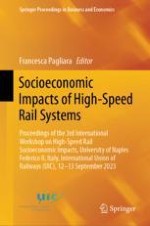2024 | OriginalPaper | Chapter
Causal Effect of the Shinkansen on Population Change in Japan: An Application of PSM-DID
Authors : Jingyuan Wang, Shintaro Terabe, Hideki Yaginuma, Haruka Uno, Yu Suzuki
Published in: Socioeconomic Impacts of High-Speed Rail Systems
Publisher: Springer Nature Switzerland
Activate our intelligent search to find suitable subject content or patents.
Select sections of text to find matching patents with Artificial Intelligence. powered by
Select sections of text to find additional relevant content using AI-assisted search. powered by
